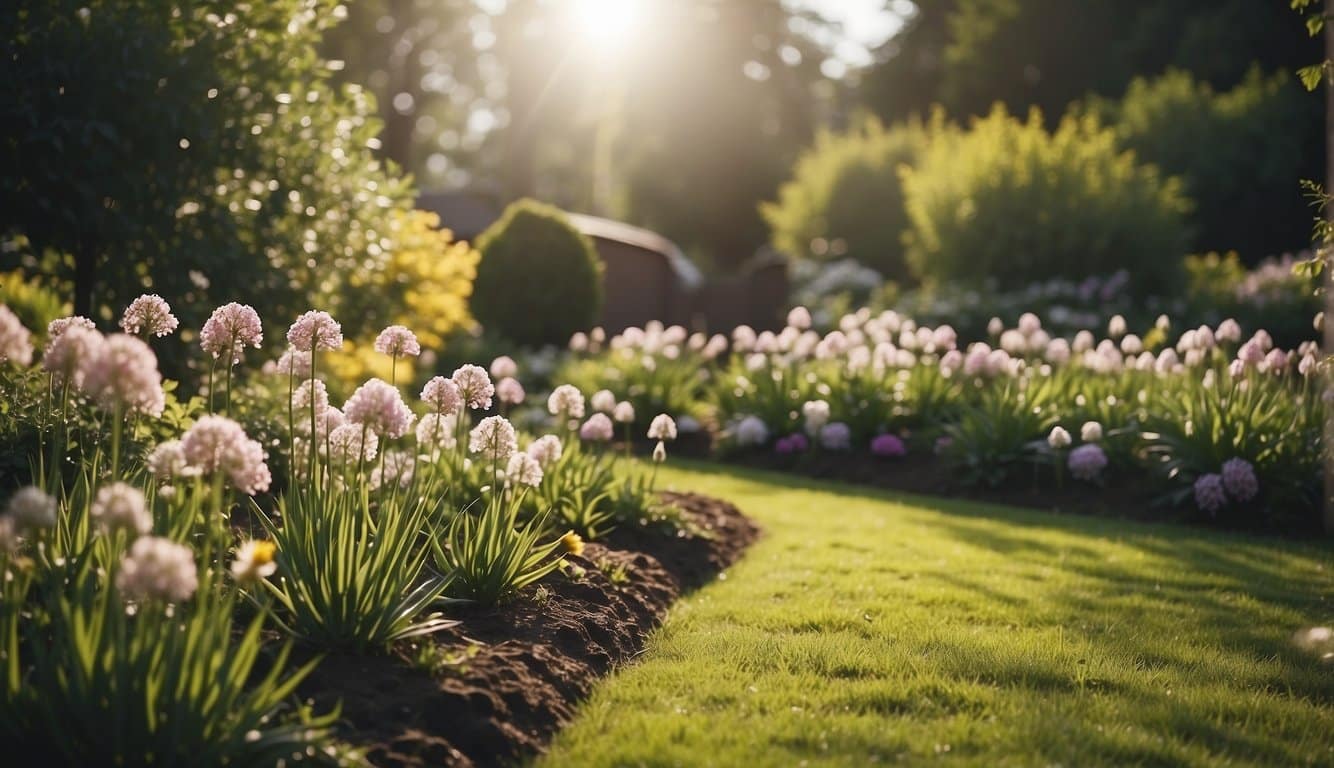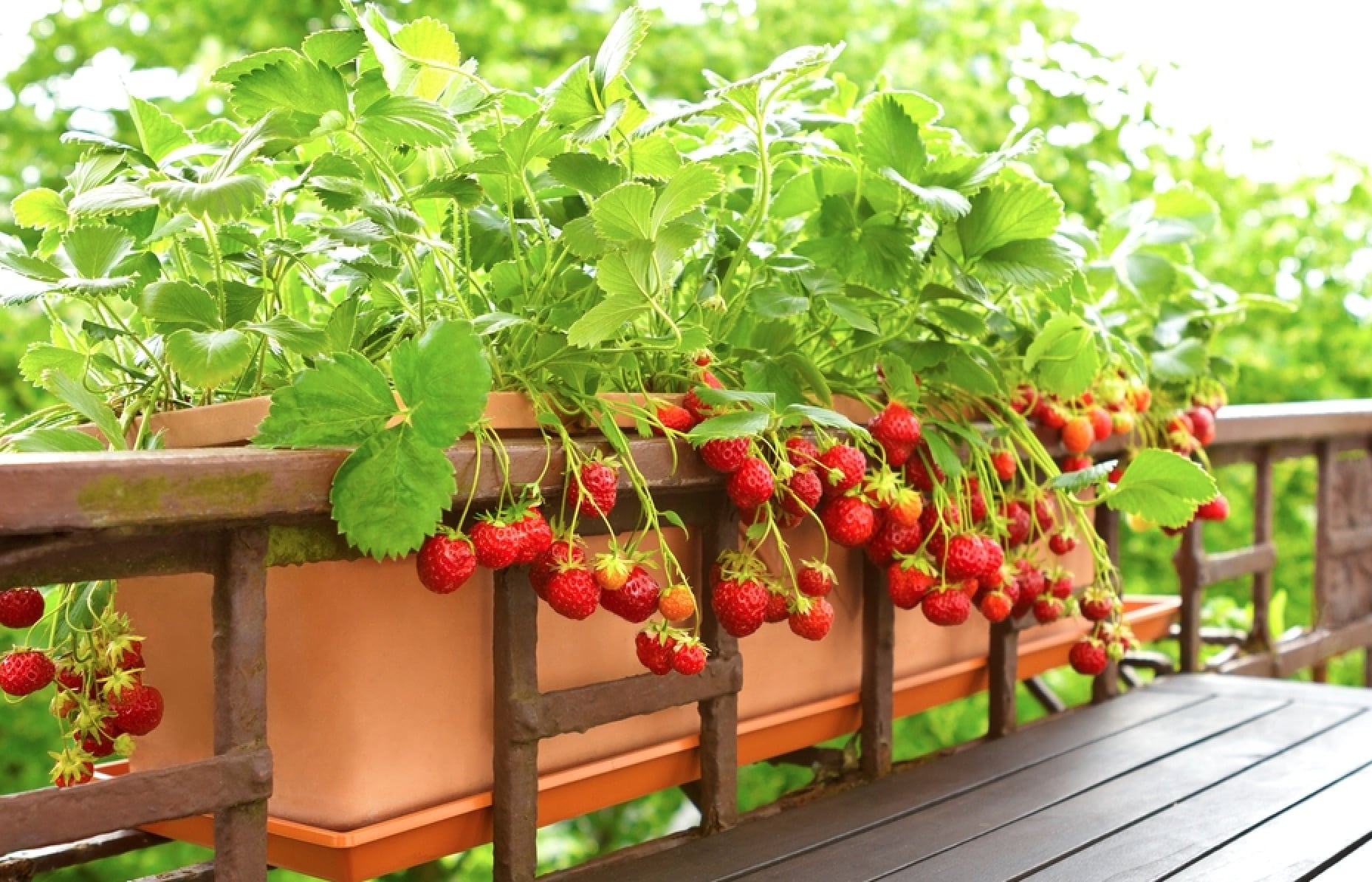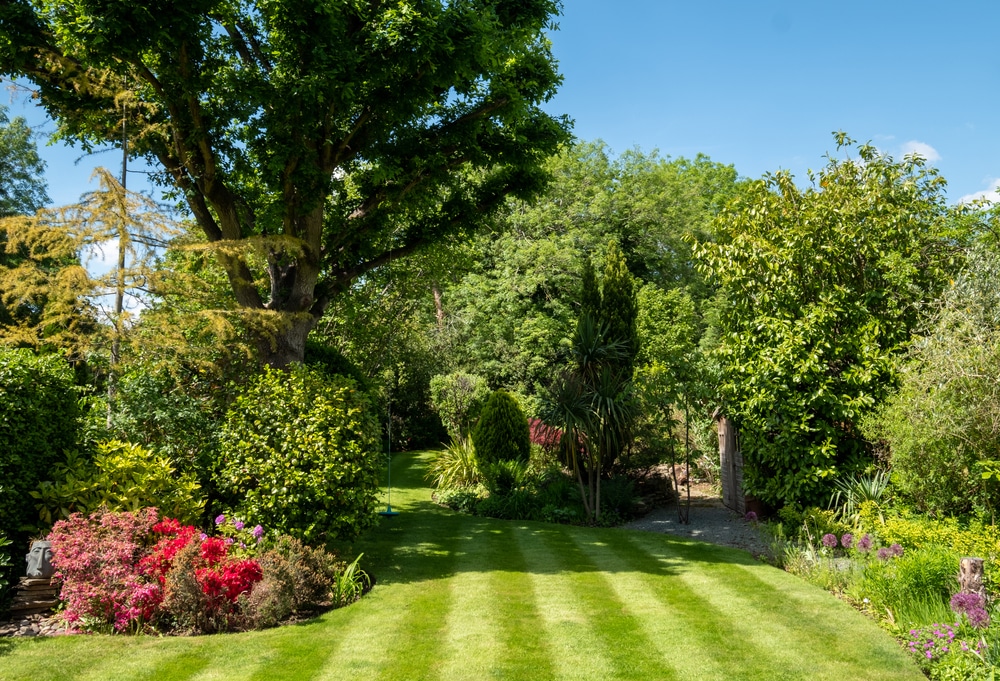Climate and Soil
As spring arrives, it’s crucial to tailor your gardening strategy to the specific conditions of your local climate and soil.
Making informed decisions can prevent setbacks in plant growth and garden productivity.
Ignoring Frost Dates
- Last Frost Date: You need to be aware of the last frost date for your region.
- Planting tender seedlings before this date can lead to frost damage.
- First Frost Date: Similarly, knowing the first frost date helps you plan when to harvest or protect plants in the fall season.
For accurate frost dates, referencing trusted local gardening resources is essential.
Moreover, considering historical weather patterns provides additional insight, helping you avoid premature planting.
Neglecting Soil Testing
- pH Level: The acidity or alkalinity of your soil, indicated by its pH level, greatly affects plant health. Most plants thrive in soil with a pH between 6.0 and 7.0.
- Nutrient Profile: Ensuring your soil has the right balance of nutrients is just as important.
- Key ones to look for include nitrogen, phosphorus, and potassium.
Simple soil testing kits can provide this valuable information.
Also, consider consulting with a local agricultural extension office for a more comprehensive assessment.
Overlooking Microclimates
- Sunlight: Your garden might receive varying amounts of sunlight due to shadows from buildings or trees, which can create microclimates.
- Wind Protection: Areas sheltered from wind or exposed to drafts can affect how certain plants grow and survive.
By paying attention to these variations, you can position plants in optimal locations.
Some areas of your garden may support warmth-loving plants, while others are suited for plants that prefer shade or wind protection.
Selecting and Planting Your Garden
When setting up your garden in spring, it’s crucial to select the right plant varieties, time your planting correctly, and space your plants properly to ensure a flourishing garden.
Choosing the Wrong Plant Varieties
- Climate Needs: Every plant has specific climate and soil preferences.
- Opt for varieties that are well-suited to your local climate to avoid growth issues.
- Growth Habit: Consider height, spread, and growth speed.
- Tall plants might shade others unintentionally, so plan your garden layout accordingly.
Planting Too Early or Too Late
- Frost Dates: Monitor local frost dates; planting too early may expose seedlings to unexpected frosts, while planting late can shorten the growing season.
- Proper timing leads to better plant establishment.
- Soil Temperature: Use a soil thermometer to check for the ideal soil temperature before planting, as some seeds require warm soil to germinate effectively.
Improper Plant Spacing
- Air Circulation: Proper spacing allows for adequate air circulation, which is vital in preventing fungal diseases.
- Resource Access: Ensure each plant has enough room to access sunlight, water, and nutrients.
- Overcrowding can hinder growth and reduce yields.
- Refer to guidelines on plant spacing to maximize your garden’s potential.
Caring for Your Garden
In ensuring your garden thrives this spring, precision in watering, mulching, and fertilizing is critical. Here’s how to navigate these tasks:
Overwatering or Underwatering
- Overwatering: Too much water can lead to root rot, depriving plants of oxygen.
- Stick to a watering schedule, considering rainfall and soil moisture.
- Underwatering: Conversely, plants can wither without adequate hydration.
- Check the soil’s top inch; if it’s dry, it’s time to water.
Use a moisture meter for accurate assessment or observe plant leaves for signs of distress.
Skipping Mulch Application
- Benefits of Mulching: Mulch retains moisture, prevents weeds, and regulates soil temperature.
Remember to:
- Apply a 2-3 inch layer of mulch around your plants.
- Keep mulch away from plant bases to prevent rot.
Missing out on mulch can expose your plants to temperature fluctuations and invasive weeds.
Failing to Fertilize Correctly
- Right Time and Amount: Fertilizing during the wrong part of the season can harm plant growth.
- Type of Fertilizer: Choose a fertilizer appropriate for your plants and soil type.
Be cautious not to over-fertilize, which can “burn” plants, or under-fertilize, which can lead to nutrient deficiencies.
Follow the recommendations from a reliable garden resource to get fertilizing tips.
Pest and Disease Management
As spring breathes new life into gardens, it is crucial to be vigilant with pest and disease management to ensure the health and vitality of your plants.
Neglecting Pest Control
- Regular Inspection: You must inspect your plants frequently for any signs of pests.
- Early detection can be the difference between a minor issue and a full-blown infestation.
- For example, look for chewed leaves, sticky residue, or visible insects.
- Proactive Measures: Taking steps like proper soil preparation and choosing disease-resistant plant varieties can deter pests before they become a problem.
- Introducing beneficial insects that prey on common pests can also be an effective natural control method.
Ignoring Signs of Disease
- Timely Action: When you see signs of disease, such as spots on leaves or wilting despite adequate water, act promptly.
- Removing affected foliage and avoiding watering late in the day can prevent further spread.
- Environmental Control: Overcrowding plants creates a prime environment for diseases to thrive.
- Ensure there is ample space between your plants for air to circulate, reducing the likelihood of fungal and bacterial diseases taking hold.
Frequently Asked Questions
In this section, you’ll find detailed guidance answering common queries geared towards optimizing your spring gardening efforts. Ensuring you start on the right foot is crucial for a flourishing garden.
What steps should be taken to effectively prepare a garden for spring planting?
- Begin by clearing out any leftover debris and weeds from garden beds.
- Conduct soil testing to determine the need for amendments such as compost or fertilizers.
- Ensure that your gardening tools are clean and in good repair for the upcoming season.
What common garden tasks should be prioritized during the spring season?
- Prune shrubs and trees to encourage healthy growth and flower production.
- Mulch garden beds to suppress weeds and regulate soil temperature.
- Start seeds indoors for vegetables and flowers that require a longer growing season.
Which challenges are most often faced by gardeners during the spring months?
Gardeners commonly encounter unpredictable weather changes and pests that can harm young plants.
To mitigate these issues, be prepared to protect sensitive plants from late frosts and utilize pest control methods like traps or barriers.
How can one determine the appropriate timing for starting a garden in early spring?
- Consult local frost dates to time the planting of frost-sensitive plants accurately.
- Observe soil conditions; they should be dry enough to not stick to garden tools.
What are the key considerations when transitioning a garden from winter dormancy to spring activity?
-
- Gradually acclimate plants to outside conditions; this process is known as hardening off.
- Adjust watering practices as temperatures increase and plants begin to grow actively.
What are the consequences of improper soil preparation for a spring garden?
Failure to prepare the soil properly can lead to poor drainage. It can also lead to inadequate soil structure and lack of essential nutrients. All of these can stunt plant growth or even cause plant death.


